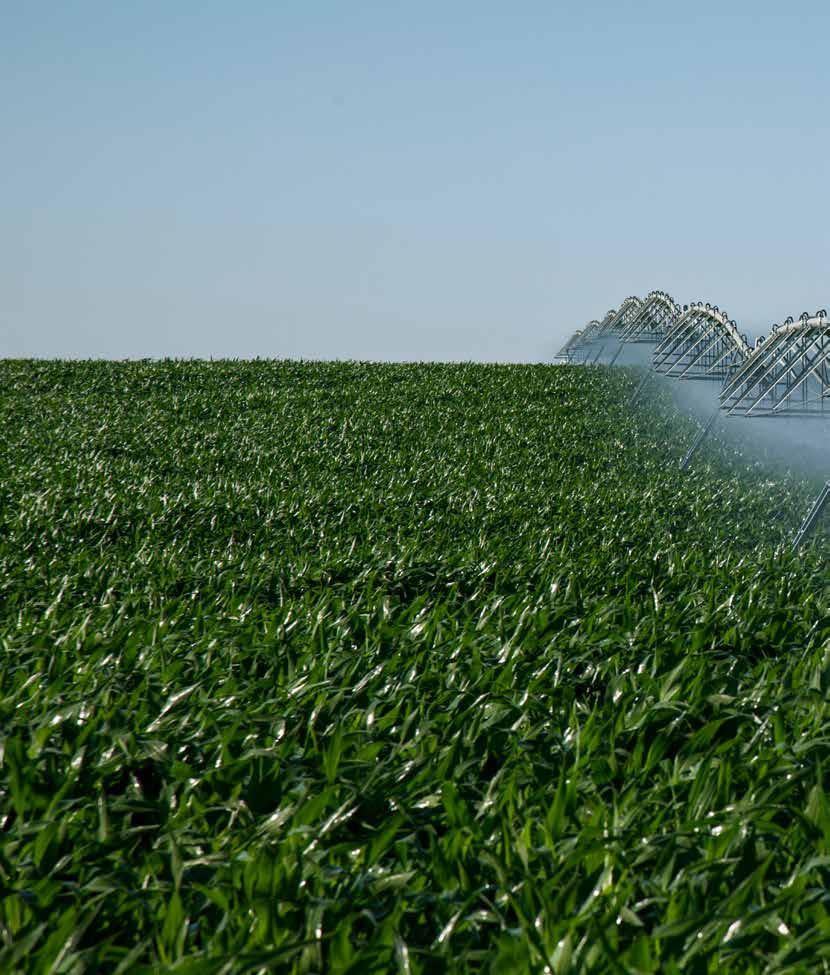
4 minute read
Building a water efficient sector
The agricultural sector accounts for the vast majority of South Africa’s water use and could be severely impacted by anticipated future water shortages. Water&Sanitation Africa speaks to Janse Rabie, head: Natural Resources, Agri SA, about how the sector is adapting and implementing water efficient practices.
As the largest water user in SA, how is the agricultural sector working to reduce water consumption?
Advertisement
JR Although the agricultural sector is the largest user of water in South Africa, consuming approximately 60% of available water resources, it is interesting to note that the global average water consumption of the agricultural sector is approximately 70%. It is also important to bear in mind that the sector only receives what remains after all other water uses are served. This includes domestic, industrial, mining and governmental uses, adhering to international obligations and preserving the environmental reserve.
South Africa is the only country in Africa that is technically food secure in that it can provide its population with sufficient domestically produced food and is a net exporter of agricultural commodities, generating significant foreign revenue. Given that South Africa is a water-stressed country, its relative food security is a significant achievement.
Water is a critical resource to the agricultural sector and the efficient use thereof is vital to the social stability and economic growth of South Africa. As a significant input cost component, the efficient use of water is crucial for farmers. This entails technical improvements in water delivery and application – e.g. micro-irrigation, use of remote sensing and satellite imagery, cultivation of appropriate droughtresistant cultivars, and metering/ measurement of water consumption. It also entails the maintenance and improvement of raw-water storage and supply infrastructure.
The management of water resources at the appropriate management level is crucial in this regard. Although national government is the overall custodian of our water resources, local-level management institutions – including water-user associations and irrigation boards, as well as catchment management agencies – are vital in ensuring efficient water use.
South Africa predicts a potential 17% water deficit by 2030. What impact might this have on food security?
The anticipated water deficit will clearly detrimentally affect food security – not only in South Africa, but the wider region. Unless all stakeholders come together and address this issue as a matter of utmost importance, South Africa’s food security is at risk. This food security is a major contributor to national and regional social stability and economic growth – it cannot be underestimated.

How have South Africa’s recent and ongoing droughts affected the agricultural sector?
Recent and ongoing droughts continue to have a severe impact on the agricultural sector. These are felt the most at local and commodity-specific level. For example, the ongoing severe drought in parts of the Northern Cape has had a particularly severe impact on sheep farming in that area.
In light of these droughts, how is the agriculture sector adapting to lower water availability?
Farmers in different parts of the country implement diverse adaptation measures to deal with lower water availability. In the case of the meat and wool producing commodities, this often means reducing herd sizes. Other examples include removing fruit trees and vineyards, cultivating fewer hectares of other crops and, where possible, replacing them with more drought-resistant commodities. Again, continuing and improving water-use efficiency is crucial to the viability of the sector.
Are there water efficiency measures that can be widely implemented to reduce consumption in the sector?
Agriculture is always the first sector to face restrictions in times of water stress. Water restrictions, both at local and national level, are still among the most significant consumptionreduction measures. Technologies such as micro-irrigation and use of satellite imagery and remote sensing can be widely implemented to reduce water consumption, but the costs associated with implementing these can be prohibitive.
The best water efficiency measure, however, remains adequate planning and management. In this regard, the accurate and appropriate measurement and metering of water use is critical to ensure efficient use and reduced consumption.
What are the impacts of declining raw water quality on the sector?
The impacts of pollution and deteriorating raw-water quality are a significant concern to Agri SA. Deteriorating water quality not only affects the sector’s ability to produce agricultural commodities and products, but also the cost of ensuring food safety – costs that must be borne by the entire value chain and, ultimately, the consumer. In this regard, Agri SA is particularly concerned by government’s appetite for high-risk industrial, mining and shale gas developments, especially in high-value agricultural areas.
How is Agri SA engaging with government on water issues?
Agri SA has a strong and active working relationship with government. Our approach is to inform and assist government when it comes to managing our country’s water resources as much as possible. This includes regular meetings and interactions with the Department of Water and Sanitation, being involved in and commenting on legislative and policy developments, and having access to the highest levels of government in addressing water-related matters. Where needed, and where no other course of action is available, Agri SA resorts to the courts to challenge certain actions by government that we believe threaten the position and continued viability of the sector.
We have a significant interest in ongoing litigation in the Supreme Court of Appeal concerning the legal ability to transfer water from one water user to another and from one property to another in terms of the provisions of the National Water Act (No. 36 of 1998). The ability to transfer water-use entitlements in accordance with the provisions of the Act is an important tool with respect to achieving wateruse efficiency and maintaining the stability and viability of the sector.










